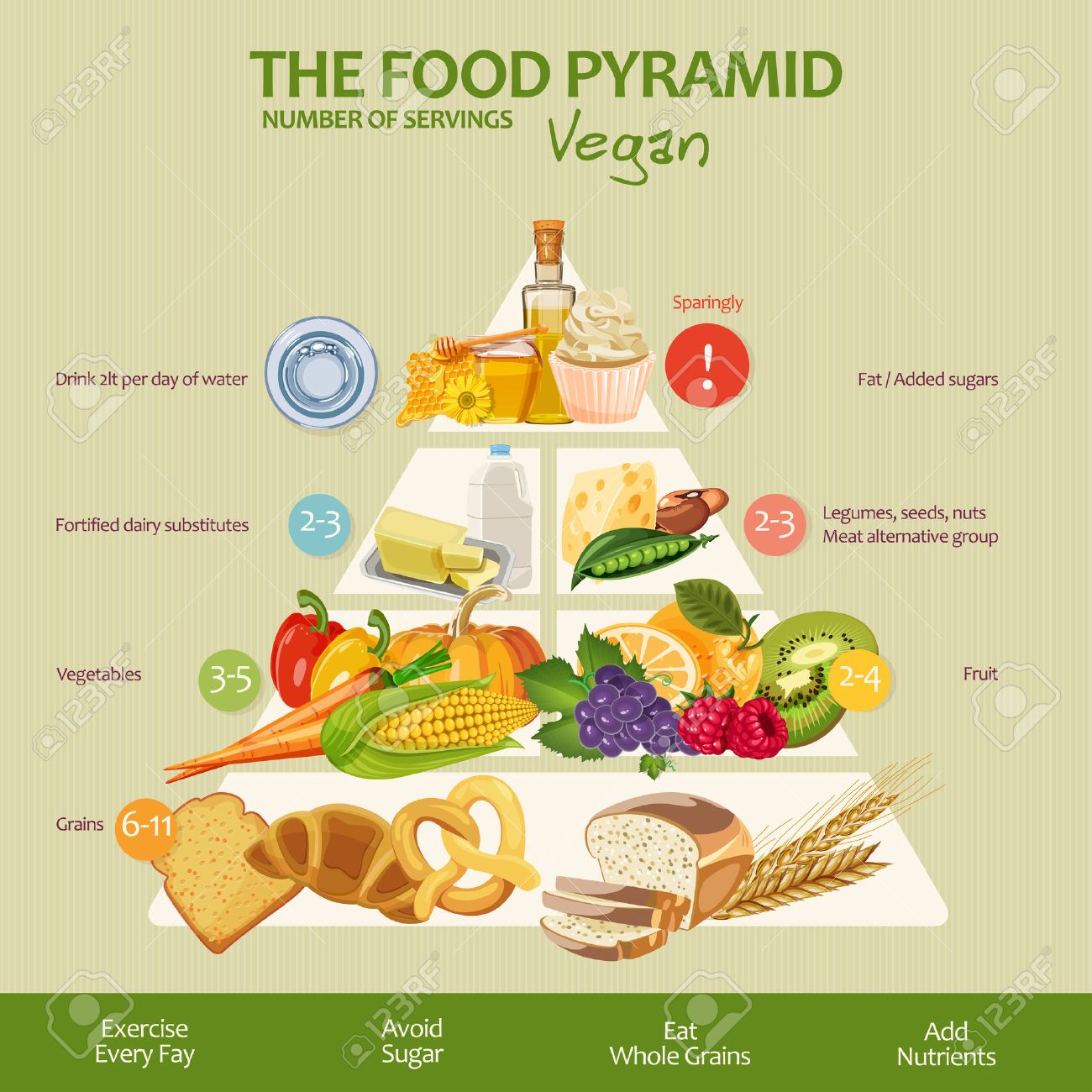
The "Health Plate" is a balanced diet that includes fruits, vegetables, grains, healthy oils, and other healthy foods. Vitamin A, vitamin B, and vitamin E are essential nutrients. The MyPlate green section has a large variety of fruits, vegetables, and the red section has a smaller selection. While the color orange is associated with sugar, it does not reflect the dietary fiber content of whole fruit. It is important that you eat at minimum one serving of fruit and vegetables each day.
Harvard Health Publishing partnered with Harvard School of Public Health to create the new plate. It provides more detailed recommendations than MyPlate which was developed by U.S. Departments of Agriculture and Human Services. It is based solely on research on nutrition and not influenced at all by the industry. These authors hope that this alternative will prove to be a valuable tool for the general public. Before making any diet changes, it is a good idea that you read these guidelines.

The Healthy Eating Plate covers five food groups, and suggests eating a variety. It also encourages people eating healthy fats. They may not be present on your plate but they can have important nutrients that could be harmful to your health. The USDA recommends that you consume 5 teaspoons of oil daily. You should choose whole grains and not refined grains. Whole grains are high fiber and can help keep you fuller longer.
Healthy Eating Plate encourages you to eat a wide range of fruits and vegetables. Americans are notorious for deficient in vegetable consumption. The plate encourages eating fruits and vegetables with low fat, salt, and high levels of saturated fat. Even though potatoes are popular, they contain a lot of refined carbohydrates which are not healthy for the human body. You should limit your potato consumption. The Healthy Eating Plan suggests that we include a wide variety of colorful vegetables in the diet.
The Healthy Eating Plate recommends eating a balanced diet with an emphasis on fruits and vegetables. You can print the Healthy Eating Plate in over 25 languages to help you plan your daily meals. The Healthy Eating Plate emphasizes fruits and vegetables as the foundation of a balanced diet. You should also limit potatoes, which don't count as vegetables. Because they are high-calorie and have a negative effect upon blood sugar, you should limit their consumption.

The Healthy Eating Plate also encourages a healthy amount of fat. Consuming more fats, in addition to butter, is a good idea. These should be combined with a reduction in trans fat and saturated oils. The Healthy Eating Plate also encourages people to choose healthier oils. The Healthy eating pyramid aims to encourage Americans consume more of these healthy fats. The MyPlate does nothing to address the problem of fat. The MyPlate does not address this issue. The best guide for Americans is still the food pyramid.
FAQ
How can I reduce my blood pressure
You must first determine the cause of high blood pressure. Then you need to take steps to reduce this cause. These could include taking medication, eating less salt and losing weight.
You also need to make sure you are getting enough exercise. If you don’t have enough time to exercise regularly, consider walking more often.
If you're unhappy with the amount of exercise you do, you might consider joining a fitness club. A gym that has other members who are motivated by your goals will be a good choice. It's much easier to follow a routine if someone is with you at the gym.
What is the difference of fat and sugar?
Fat is an important energy source, which comes from food. Sugar is a sweet, naturally occurring substance in fruits and vegetables. Both fats and sugars provide the same number of calories. Fats have twice the calories of sugars, however.
Fats are stored in your body and can cause obesity. They can lead to cholesterol buildup in the arteries, which could cause heart attacks or strokes.
Sugars can be quickly absorbed by your body and give you instant energy. This causes blood glucose levels rise. High blood glucose levels can be dangerous because it increases the risk of developing type II diabetes.
How can I live my best life everyday?
The first step towards living your best life everyday is to find out what makes you happy. Once you have a clear understanding of what makes you happy you can go backwards. You can also ask others how they live their best lives everyday.
You can also read books like "How to Live Your Best Life" by Dr. Wayne Dyer. He discusses happiness and fulfillment in every aspect of our lives.
What's the problem with BMI?
BMI stands to Body Mass Index. It is a measurement of body weight based on height. Here is how to calculate BMI using the following formula.
Weight in kilograms divided with height in meters.
The score is expressed as a number between 0 and 25. Scores between 0 and 25 indicate obesity. A score of 18.5 indicates overweight. A score of 23 indicates obesity.
A person who weighs 100 kilograms and is 1.75m tall will have an BMI of 22.
Statistics
- In both adults and children, the intake of free sugars should be reduced to less than 10% of total energy intake. (who.int)
- WHO recommends consuming less than 5% of total energy intake for additional health benefits. (who.int)
- WHO recommends reducing saturated fats to less than 10% of total energy intake; reducing trans-fats to less than 1% of total energy intake; and replacing both saturated fats and trans-fats to unsaturated fats. (who.int)
- According to the Physical Activity Guidelines for Americans, we should strive for at least 150 minutes of moderate intensity activity each week (54Trusted Source Smoking, harmful use of drugs, and alcohol abuse can all seriously negatively affect your health. (healthline.com)
External Links
How To
What does the "vitamins” word mean?
Vitamins are organic compounds that can be found in foods. Vitamins are necessary for us to absorb nutrients in the foods we consume. Vitamins are not made by the body, so they must be obtained through food.
There are two types if vitamins: water soluble, and fat soluble. Water-soluble vitamins dissolve in water easily. Vitamin C,B1(thiamine), B2 (2riboflavin), and B3 (3niacin), as well as vitamin C,B1, B2 (riboflavin), and B3 (niacin), vitamin B6 (pyridoxine), vitamin folic acid (biotin), pantothenic, and choline are examples. Fat-soluble vitamins can be stored in the liver or in fatty tissue. Examples include vitamin D, E, K, A, and beta carotene.
Vitamins are classified according to their biological activity. There are eight major vitamin groups:
-
A - Essential for healthy growth and health maintenance.
-
C - essential for nerve function and energy generation.
-
D - Essential for healthy teeth and bones.
-
E - Required for good vision & reproduction
-
K – Required for healthy nerves & muscles.
-
P - Vital for strong bones and teeth.
-
Q - aids digestion and absorption of iron.
-
R - Required for red blood cell production
The recommended daily allowance for vitamins (RDA) varies based on gender, age, and physical conditions. The U.S. Food and Drug Administration (FDA) sets the RDA values.
For example, the RDA for vitamin A is 400 micrograms per dayfor adults 19 years or older. Pregnant mothers need 600 micrograms per days because it is vital for the development and growth of their baby. Children ages 1-8 require 900 micrograms per day. Babies under one-year old require 700 mg per day. Between 9 and 12 years of age, however, this drops to 500 mg per day.
Children aged 1-18 years need 800 micrograms daily, while children overweight require 1000 micrograms per days. Children who are severely obese or underweight will need 1200 micrograms each day.
Children aged 4-8 years old who have been diagnosed as having anemia require 2200 micrograms of vitamin C per day.
Adults over 50 years of age need 2000 micrograms per day for general health. Because of their higher nutrient needs, women who are pregnant or nursing need 3000 mg per day.
Adults over 70 need 1500 micrograms daily, as they lose 10% of their muscle every ten years.
Women who are pregnant or lactating need more than the RDA. Pregnant mothers need 4000 micrograms per daily during pregnancy and 2500 after giving birth. Breastfeeding mothers need 5000 micrograms per day when breast milk is being produced.